
Transcription
JOB SAFETY & ENVIRONMENT ANALYSIS (JSA) / SAFE WORK METHOD STATEMENTACTIVITY OR TASK:Installation of Staircase and Hand Rails – Welding, Heights and Crane UsageJSA PreparationSite Location:Project:Date:Work TeamJob Number:Job AreaJSA Number: CSI3292. HAZARD IDENTIFICATION Identify hazards that may be present by ticking items on the list below.WORK LOCATIONHAZARDOUS AREAFood SafetyHazardous Substances - attach MSDS toJSADifficult Entry/ExitOxygen DeficiencyOxygen ExcessEngulfment (trench collapse)Poisonous Gas PresentTemperature ExtremesDefined Confined SpaceExplosive Gas PresentWorking AloneWorking at HeightsRemote AreaMotor Room HazardsToxic SubstancesPotential for Difficult RescuexHIGH RISK HAZARDSFalling ObjectsPoor LightingSlippery SurfacesMultiple Electrical FeedsTrip HazardsElectrical Hazards - LVElectrical Hazards - HVFire/SmokeMoving MachineryManual HandlingSteamLadders used in the taskWorking at HeightsWorking near Crane & CraneRunwaysResidual PressureCutting/Drilling/GrindingWeldingXXXXFlamm. Materials PresentSharp MaterialsSuspended loadsPoor VisibilityInhalable Dusts/FibresHigh Noise LevelsUse of ChemicalsElevated Work PlatformDifficulty to Communicate amongst workersTools & EquipmentHeat/ Sunlight/ RadiationXXTraffic MovementWorking near Operation Processing LinesLive RailsXxPneumaticsUncontrolled Energy ReleaseOxy cuttingRevision Date: July 2012XX3. PRECAUTIONS: hard hat, safety glasses, safety boots compulsoryADDITIONAL PRECAUTIONSFood Grade LubricantsApproved Chemicals onlyWelding/Grinding GuidelinesLoose items removedTaintsProduct Zones protectedPest control/doorsAnti-contamination GuidelinesIs consultation with QA requriedAllergen RiskNo Raw Materials in areaGloves: type Welding GlovesGoggles/Glass’sFull Face ShieldHigh Visibility VestHarnessFire ExtinguishersBarricades or TapeVentilationSteel Cap BootsLightingScreens/partions/drop sheetsRespirator or Dust maskGlass on RegisterJewellery RemovedErect Warning signsPersonal Locks or Tag systemGroup isolationWelding screenFall Arrest systemsWelding Face ShieldHearing ProtectionPlastic OverallsGas WatcherSafety ObserverAcid SuitPhone/Radio/PAProcedure/SOPDress CodePhone InspectedXXXXXxXXXXXXErect Scaffolding to accessWaste DisposalMSDSTHIS DOCUMENT IS UNCONTROLLED WHEN PRINTEDJSA Revision: 1.7XXXXXXXPERMITSHot WorkExcavationConfined SpaceHazardous Work ClearanceAccess to AreaHigh Voltage AccessScaffoldingRoof Access ExtFire SystemLockout RemovalWorking at Heightsxx
JOB SAFETY & ENVIRONMENT ANALYSIS (JSA) / SAFE WORK METHOD STATEMENTTake 5 For SafetyEMERGENCY CONTACT INFORMATIONPOLICE / FIRE / AMBULANCEThe Five Step risk management process:(0) - 000 OR 112 (MOBILES)PreparationDEPARTMENTAL REP2. Identify tasks, activities, work processes and practices for assessmentH & S OFFICERPOISONS INFORMATIONNATURAL GAS SUPPLIER1. Define the contextStep 1Identify HazardsStep 2Assess and prioritise risksStep 3Decide on control measures including heirarchy of controlStep 4Implement control measuresStep 5Monitor and review13 11 261300 763 106INSTRUCTIONS:1. Call (0) 000 and notify emergency personnel2. Administer First Aid (DRABCD)3. Notify Area Manager for all emergency events.4. Notify Chief Fire Warden if Fire event5. Notify H & S Manager/Officer and/or Injury ManagementCoordinator of all emergency Events6. Secure the Work Area, LOTO Equipment if necessary.4. Risk Rating Table The objective of rating the risk is to lower the risk by initiating the risk control measures.The score is noted in the JSA risk score column on the next page – both before & after risk control measures have been nominated.Consequence ScoreLikelihood Score1. Rare2. Unlikely3. Possible4. Likely5. AlmostCertain5101520255. CatastrophicDeath or multiple life threatinginjuries.4. MajorLife threatening injury or multipleserious injuries causinghospitalisation.4812161 -3Low Risk4-6Moderate Risk8 - 12High Risk15 - 25Extreme Risk203. ModerateSerious injury causinghospitalisation or multiple medicaltreatment cases.3691215246810123452. MinorMinor injury or First Aid TreatmentCase.1. InsignificantInjuries or ailments not requiringmedical treatment.Revision Date: July 2012THIS DOCUMENT IS UNCONTROLLED WHEN PRINTED
JOB SAFETY & ENVIRONMENT ANALYSIS (JSA) / SAFE WORK METHOD STATEMENTACTIVITY OR TASK:Installation of Staircase and Hand Rails – Welding, Heights and Crane UsageSequence of Basic Job StepsStep Break down Job into steps. Each step shouldNo. accomplish a major task and be logical.Logical Environmental AspectssequencePotential Safety &Environmental Hazards/ImpactsIdentify the hazards (health and safety orenvironmental) associated with each step,examine each to find all possible risk factorsRisk RatingUse table on theprevious page toscore riskC1Pre-job Meeting/ToolboxInexperience workers, inadequateconsultation, inadequate understanding ofjob/equipment, Site hazards and emergencyprocedures not known4L2Identify work area/Site EstablishmentUnauthorised access/egress3286Unsafe conditions3Notify other teams of the worksNoise / Traffic / area access / Fumes3264Assess if a Permit To Work is requiredInjury / damage as a result of incorrectinformation3395IsolationsRevision Date: July 2012Injury / damage to plant as a result ofincorrect isolations43CSI329JSA Revision: 1.7Recommended Corrective Action or Procedure12Risk RatingDetermine what actions are necessary to eliminate or minimise all hazards that couldOf the risklead to an accident, injury, illness or environmental incident. The risk must be reducedfollowingor controlled to a level that is acceptable before work commences.corrective actionIndicate who is to perform the action where applicable against each action#Risk of injury due to low awareness of workenvironment.2JSA Number:CL#224212Ensure adequate communication to team leaders and to work groupsadjacent212 Obtain correct PTW for the task. Training in PTW system.313 Check isolations with operator at worksite before commencing work ifisolations are required. Use personal safety locks.224 Ensure that line is de-energized before commencing work. Test for effective isolation. Competent work team to perform task (licenses & competencies) Adequate consultation with all relevant people, adequate competentsupervision throughout task Proper job and equipment planning for task Ensure all approved controls and prevention measures are discussed andJSA is discussed with all persons involved in the work. Site induction for team all members as required by site. All personnel to wear mandatory PPE (Hard Hats, High Vis clothing, SafetyFootwear, Safety Eyewear) Identification of Emergency equipment, procedures & contacts In the event of an emergency all persons must move to the nearest exit andmuster point. All personnel to attend daily toolbox Take 5, be aware of hazards. Ensure all site rules and guidelines are met. Consider other trade operations within the work area and maintainreasonable co-operation and communication. THIS DOCUMENT IS UNCONTROLLED WHEN PRINTED
JOB SAFETY & ENVIRONMENT ANALYSIS (JSA) / SAFE WORK METHOD STATEMENT At the start of any shift, basic warm up exercises should be conducted (aswould be conducted for most sporting activities) before commencing themanual task. Plan the task, identifying the route and ensure it is clear of any obvious slipand trip hazards. Ensure no one is working below the work area and if necessarybarricades/signage must be erected around the work area. A spotter maybenecessary and is to a hard hat if items could fall. Stand as close to the load / object as possible to avoid reaching or overstretching. Ensure a good grip before exerting force to lift, push or pull the object / tool. Keep the load as close to the body as possible, this will reduce the strain onthe lower back. When turning, use the full body, rather then twisting at the waist. Steel capped footwear must be worn at all times. Gloves should be worn where hand injuries are possible from hot, sharp orrough surfaces. Site induction, wearing of hi vis clothing, isolate area if in atrafficable area by cones/bunting. Two man lift for heavy equipment, use of vehicle loading crane for heavierequipment Use of sunscreen, hardhats to be worn, work under shade where available,have regular rest breaks depending on weather Create exclusion area. Check floor for water, oil, Be aware of other plantoperating in the area (boom/scissor/fork/etc). Clear all unrequired personnel from work area.Over-exertion, potential body strain / sprain.Dropping materials / tools, crush injuries.6Lift and carry materials, tools and equipment.Transport equipment and materials to job site.Job Site EstablishmentCaught between surfaces, crush injuries tohand/fingers.4312Slip, trip, fall.Struck by other plant.UV exposure causing sunburn / heat stress.7Barricade off work areaRevision Date: July 2012Moving machinery with possibility ofcollisions or impact resulting in personnelinjury or equipment damage. Slips, trips428THIS DOCUMENT IS UNCONTROLLED WHEN PRINTED414316
JOB SAFETY & ENVIRONMENT ANALYSIS (JSA) / SAFE WORK METHOD STATEMENT Ensure all tool and extension leads have a current (within 3 months) test tagfitted to each lead. Conduct a visual inspection of the leads and tool prior to each use. If anydefects are identified, do not use the tool and hand it to the site manager forrepair. Ensure power tool is turned off prior to connecting power. Ensure a residual current device (RCD) is fitted to the electrical distributionboard where the power lead is inserted. If not, use a portable RCD unit.Operate power tool If using a portable RCD unit, test to ensure it is working and then reset.(cut, drill, grind material) Ensure all guards are fitted to the power, DO NOT use if guards aremissing. Ensure all clothing is tucked in to avoid entanglement with any movingparts. Always wear eye protection and hearing protection when using all powertools. If necessary gloves should be worn to protect the hands from flyingparticles and hot materials. Ensure other site workers are not at risk from flying particles, if necessary,position screens to contain flying particles. Ensure all flammable materials are removed from the immediate work areaand if necessary, ensure a fire extinguisher is available. At the start of any shift, basic warm up exercises should be conducted (aswould be conducted for most sporting activities) before commencing themanual task. Plan the task, identifying the route and ensure it is clear of any obvious slipand trip hazards. Ensure no one is working below the work area and if necessarybarricades/signage must be erected around the work area. A spotter maybenecessary and is to a hard hat if items could fall. Stand as close to the load / object as possible to avoid reaching or overstretching. Ensure a good grip before exerting force to lift, push or pull the object / tool. Keep the load as close to the body as possible, this will reduce the strain onthe lower back. When turning, use the full body, rather then twisting at the waist. Steel capped footwear must be worn at all times. Gloves should be worn where hand injuries are possible from hot, sharp orrough surfaces. Rotate tasks within work group or take regular short breaks to preventprolonged exposure to manual tasks. Maintain adequate work heights, approx. 900mm high. Avoid stooping, trunk twisting and exerting high forces with rotation.Electricity, potential electrocutionHigh speed moving parts, potentiallaceration and entanglement risks84Noise312Flying particles, including hot sparksFire, potential burnsOver-exertion, potential body strain / sprain.Dropping materials / tools, crush injuries.9Lifting hand rails and fixing into place.Caught between surfaces, crush injuries tohand/fingers.4312Slip, trip, fallProlonged poor posture, reaching, exposureto vibrationRevision Date: July 2012THIS DOCUMENT IS UNCONTROLLED WHEN PRINTED414414
JOB SAFETY & ENVIRONMENT ANALYSIS (JSA) / SAFE WORK METHOD STATEMENTElectrocution:4Burns:3Eye injury (weld flash):10Welding of hand railsRadiation and sparks:Fumes:Fire:Communication failure –forms RQD33 Ensure job is set up as per safe welding procedures. Only trained personnelto carry out welding. Fit earth clamp securely to job. Welders must wear flame resistant work clothing and supplied leather PPEwhere applicable. Wear gloves if required to protect hands and arms. Wear welders shield with filter shade No. 7 to 15 inclusive. Wear AS1337safety spectacles under welding shields. Use welding screens or blankets to shield arc from other personnel.Welders assistants MUST WEAR anti weld flash eye protection to AS1337 ifassistant required to look at the arc, then the same protection as welder isrequired.129414224224224224339339248 Ensure adequate fresh air is around weld area and that fumes are efficientlyextracted away from the local work area.339 A suitable fire extinguisher MUST BE ON HAND at all times welding is inprogress. Check condition and date of extinguisher prior to starting job.224248 Complete hot work permit224 A thorough inspection of all equipment must be conducted prior to its use.Inspections should check for;326313326WORKING FROM EWP1. General wear and tear2. Cuts and tears to webbing11Inspect fall arrest equipmentDamaged fall arrest equipment43123. Signs of damage to stitching4. Stretching of the lanyard.5. Welding burns to webbing1213Pre-operation Inspection of EWPIdentify / Install an anchor pointRevision Date: July 20123Falls from height433912 Conduct a visual inspection of the EWP and complete the EWP logbookprior to operation. Any faults identified need to be reported to the Site Manager and the EWPNOT used until all faults have been repaired. Person responsible to identify / install an anchor point must do so withoutrisk of falling. Elevated work platforms, ladders or scaffold must be used toaccess the anchor point. Only approved anchor points and slings can be used as an anchor point orattachment to the anchor point. The anchorage po
JOB SAFETY & ENVIRONMENT ANALYSIS (JSA) / SAFE WORK METHOD STATEMENT Revision Date: July 2012 THIS DOCUMENT IS UNCONTROLLED WHEN PRINTED ACTIVITY OR TASK: Installation of Staircase and Hand Rails – Welding, Heights and Crane UsageJSA Number: CSI329 JSA Revision: 1.7 Risk Rating Step Environmental Hazards/Impacts No. Logical sequenceFile Size: 433KBPage Count: 11





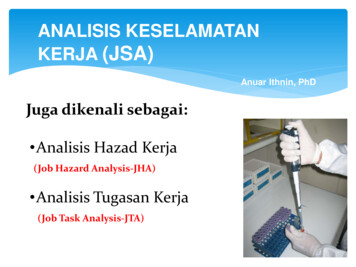
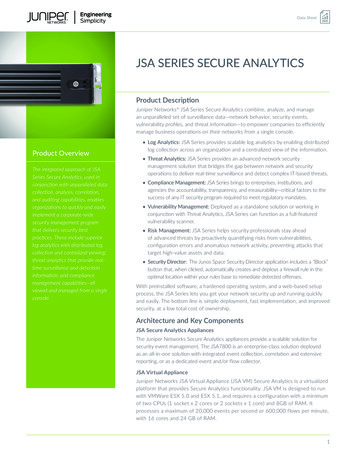
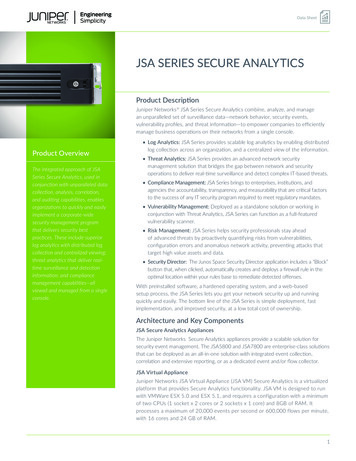
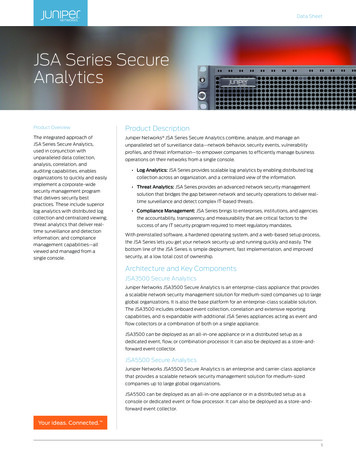
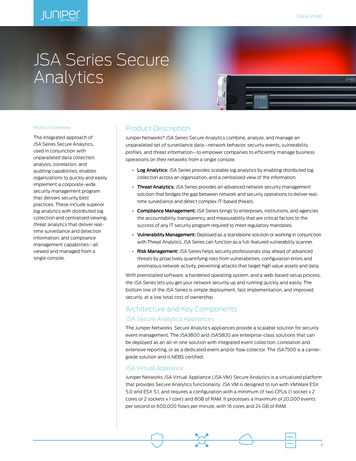
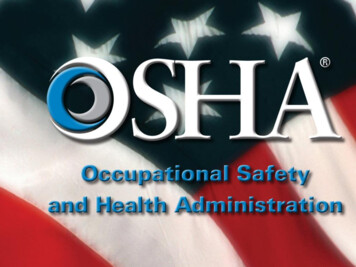
![03[1] Analysis of the Internal Environment](/img/2/031-analysis-of-the-internal-environment.jpg)